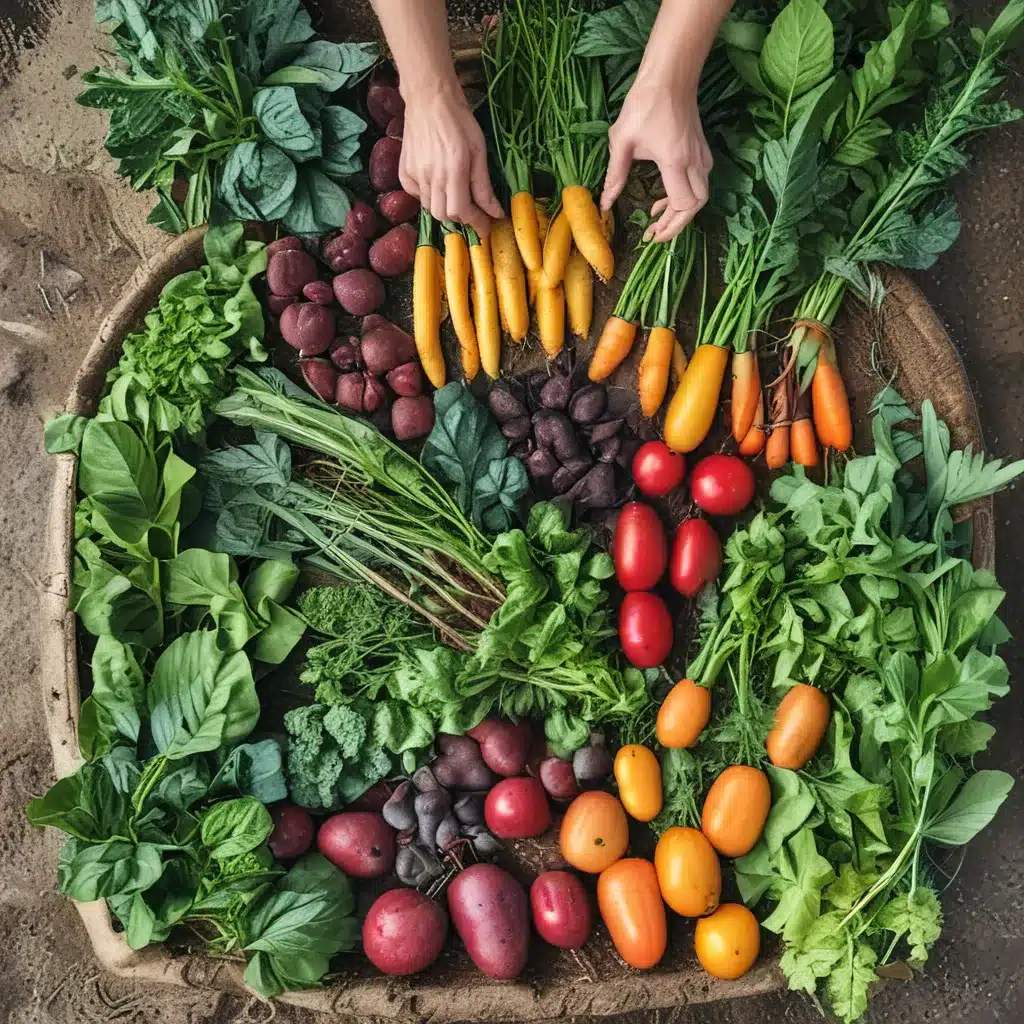
As I sit here in my cozy kitchen, gazing out at the snow-blanketed landscape, I can’t help but dream of the vibrant greens and bursting flavors that will soon grace my dinner plate. But thanks to the power of succession planting, I know that the bountiful harvest from my local CSA (Community Supported Agriculture) service won’t have to end when the first frost hits.
Succession Planting 101
Succession planting is the art of strategically sowing seeds at staggered intervals, ensuring a continuous harvest over an extended period of time. This technique is a game-changer for CSA members and home gardeners alike, allowing us to enjoy the fresh, seasonal produce we crave well into the colder months.
Thornapple CSA, the service I’m a proud member of, has mastered the art of succession planting. Their expert farmers carefully plan their plantings, considering factors like days to maturity, optimal growing conditions, and the unique microclimate of their fields. The result? A bountiful harvest that keeps on giving, from the first tender greens of spring to the hearty roots and leafy greens of late fall.
Extending the Harvest with Microgreens
One of the secrets to Thornapple’s year-round abundance? Microgreens. These diminutive powerhouses pack a nutritional punch, often containing up to 40 times the vitamins and minerals of their mature counterparts. And the best part? They can be easily grown indoors, even in the smallest of spaces.
As Kate Spring of Good Heart Farmstead explains, microgreens are the young, tender shoots of various vegetables and herbs, harvested just after the first set of true leaves emerge. Unlike sprouts, which are the entire germinated seed, microgreens are grown in soil or a growing medium, allowing for a more robust flavor and texture.
Creating a Microgreen Oasis
To get started with microgreens, all you need is a sunny windowsill or a simple set-up with a grow light. Kate recommends a room temperature around 65-70°F, with the lights on for 16 hours a day. A shallow tray, some potting soil, and your choice of seeds (basil, arugula, and kale are popular options) are all it takes to transform your kitchen into a microgreen oasis.
The key is to sow the seeds densely, about 10-12 per square inch, and keep the soil consistently moist. Within 3-5 days, you’ll see those first tender sprouts emerge, ready to be snipped and added to your meals. And the best part? You can succession plant, starting a new tray every few days to ensure a continuous supply.
Expanding Your Micro-Repertoire
But microgreens are just the beginning. As you master the art of succession planting, you can explore a whole world of winter-friendly crops, from pea shoots to overwintered greens.
Pea shoots, for instance, are a delightful and nutritious addition to salads, stir-fries, and even as a stand-alone side dish. These larger, heartier greens are grown from field pea seeds, sown densely in trays and harvested at around 4 inches tall. Like microgreens, pea shoots can be succession planted for an extended harvest.
Overwintering for Spring Bounty
And then there are the true cold-weather champions – the overwintered greens. By sowing certain hardy crops like kale, spinach, and arugula in late summer or early fall, you can enjoy a bountiful spring harvest, long before your outdoor garden comes back to life.
These resilient plants go dormant during the coldest months, drawing upon their stored energy to burst forth with fresh, flavorful leaves as soon as the days start to lengthen. With the right cold-weather protection, like a simple hoop house or cold frame, you can keep these greens thriving all winter long.
Mastering the Art of Succession
Of course, successful succession planting takes a bit of planning and experimentation. Dan Jaffe Wilder, an ecological horticulturist, recommends keeping detailed records of your plantings, noting germination times, days to maturity, and harvest yields. This will help you fine-tune your strategy for the next season.
And don’t be afraid to get creative! Mix and match different crops, play with companion planting, and explore the vast world of winter-hardy varieties. With a little experimentation and a lot of patience, you’ll be well on your way to a year-round bounty that will have your friends and family in awe.
Reaping the Rewards of Succession
As I look out at the snow-covered landscape, I can’t help but feel grateful for the dedicated farmers at Thornapple CSA and their mastery of succession planting. Thanks to their hard work and innovative techniques, I know that I’ll be able to enjoy the fresh, nourishing produce that I’ve come to love, even when the ground outside is frozen solid.
So, whether you’re a CSA member or a home gardener, I encourage you to embrace the power of succession planting. With a little planning and a lot of passion, you too can extend your harvest season and savor the flavors of the farm all year round.



